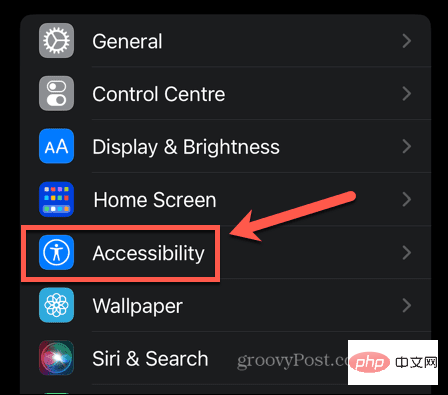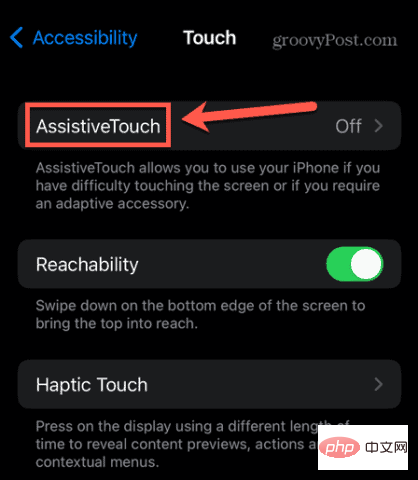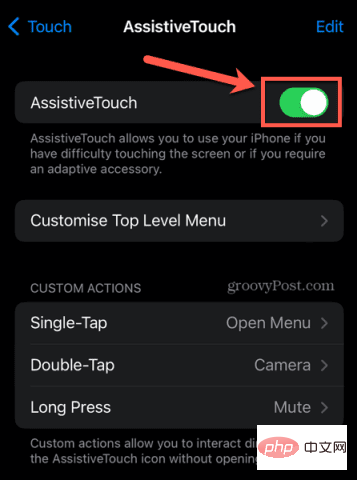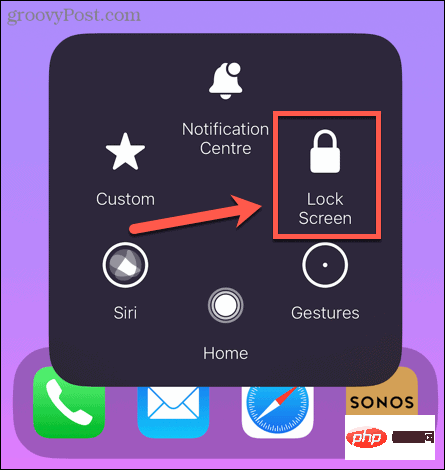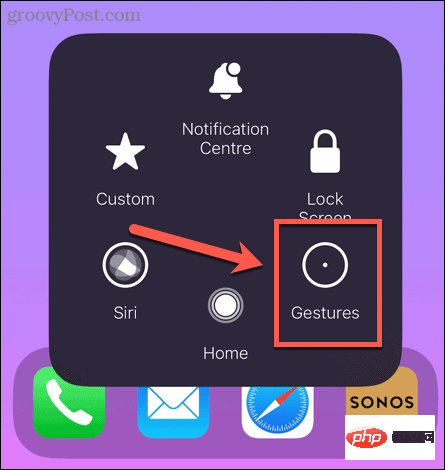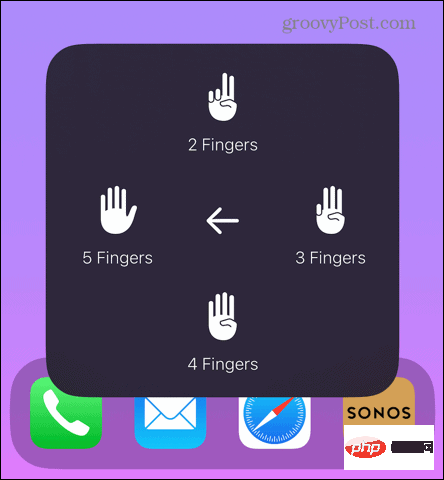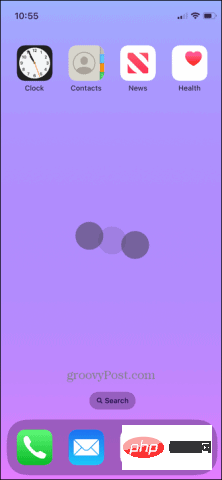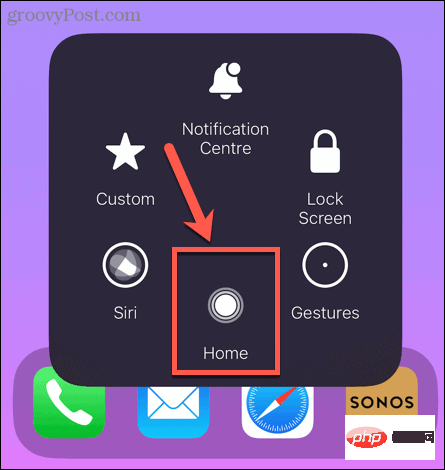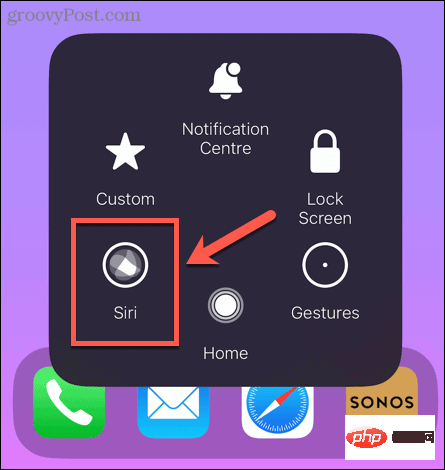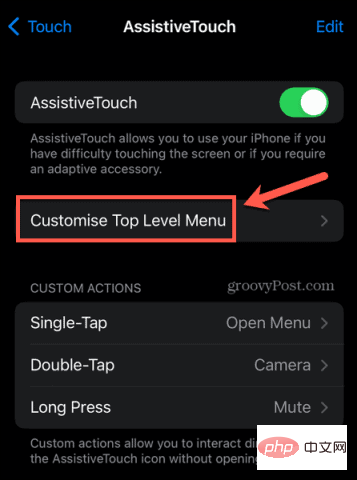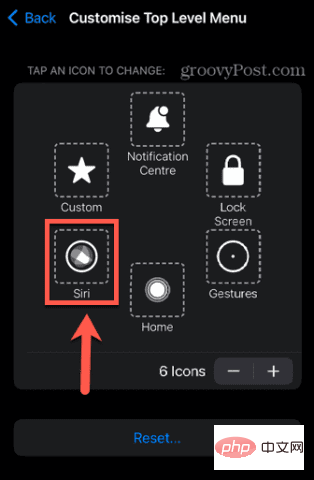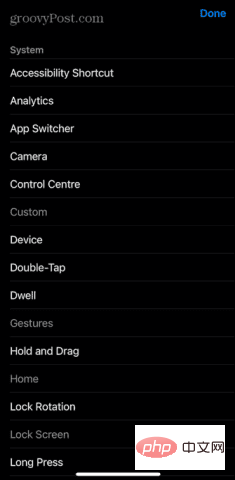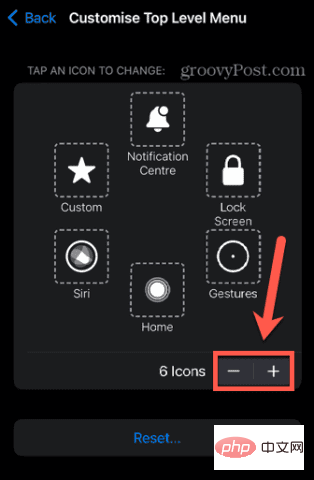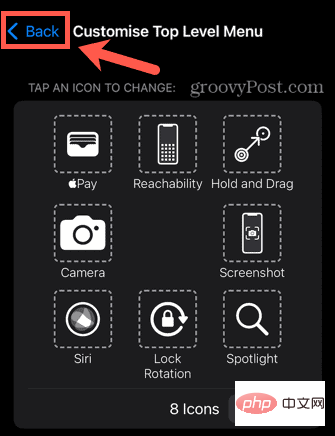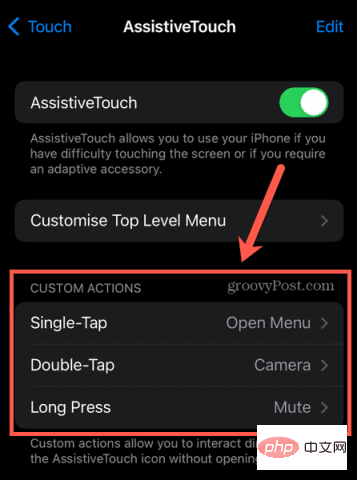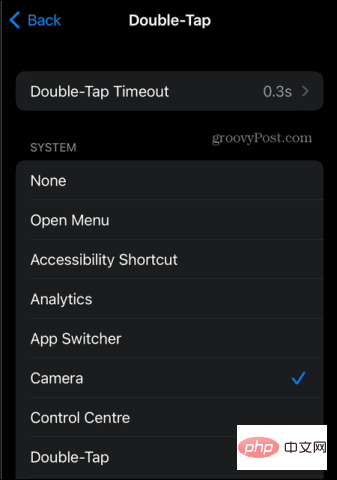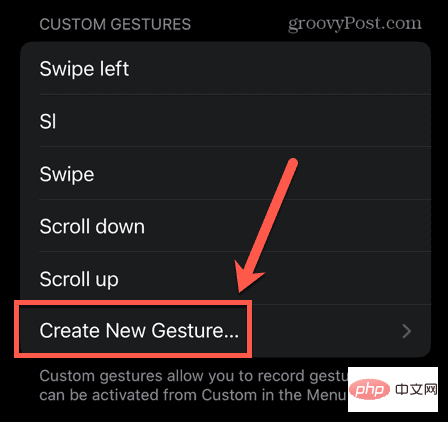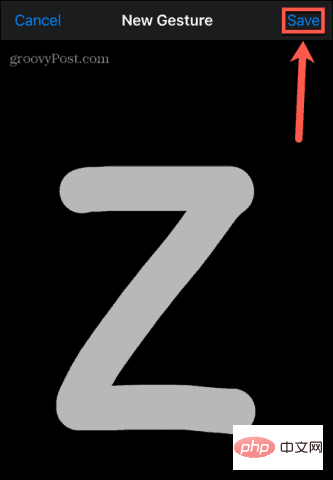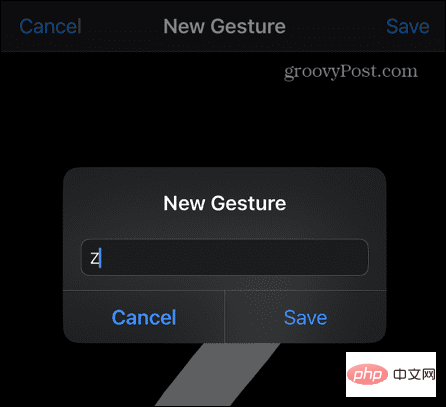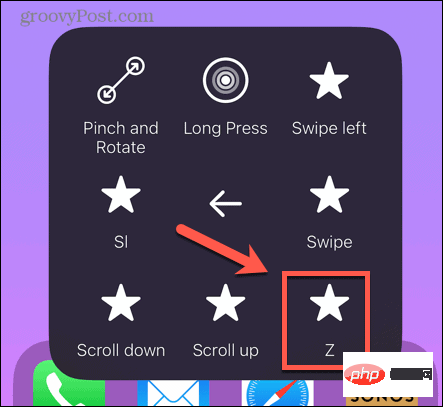What is AssistiveTouch and how to use it
What is assistive touch?
AssistiveTouch is designed as an accessibility feature that provides virtual buttons to replace physical buttons or gestures on your iPhone. For example, if you have trouble swiping, you can use AssistiveTouch to perform a swipe gesture when you tap.
However, AssistiveTouch has to be used for more than just accessibility. For example, if you miss the old Home button or want to add a quick shortcut for opening the Camera app, you can do that with AssistiveTouch, too.
How to enable AssistiveTouch on iPhone
Before you can use AssistiveTouch on iPhone, you need to turn it on. You can do this through the Settings app. If you need to turn your phone on and off frequently, consider using Siri to turn it on and off, or add a shortcut to Control Center.
To enable AssistiveTouch in iPhone settings:
- Open the Settings app.
- ClickAccessibility.

- Select Touch under Physics and Motors.

- Click on AssistiveTouch.

-
Switch AssistiveTouch to on.

- You will see the AssistiveTouch button appear on your iPhone screen.
- To turn off AssistiveTouch, repeat the process and toggle the AssistiveTouch switch to Off.
How to use Assistive Touch
After you turn on AssistiveTouch, you will see a button on the screen. This button will always remain on your screen whether you are on the home screen or using an app. It will even appear on your lock screen.
You can reposition a button by clicking and holding it and moving it to a different location. Clicking this button will bring up the AssistiveTouch menu. 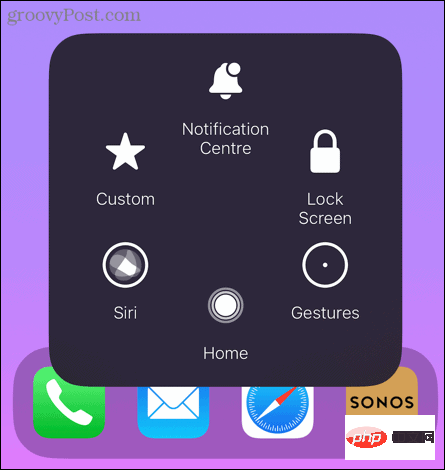
Let’s take a look at the default settings first.
Notification Center
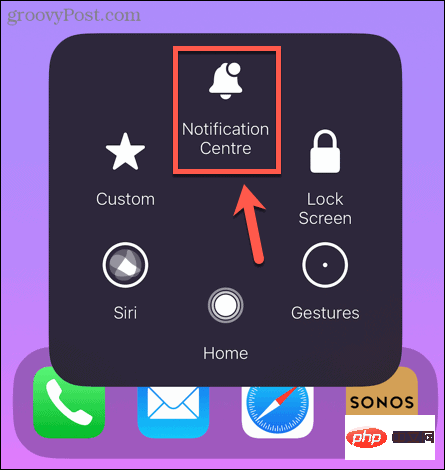
Not surprisingly, tapping Notification Center will bring up Notification Center on your iPhone. Using AssistiveTouch means you don't have to swipe down from the top of the screen to access your notifications.
Lock Screen

Clicking Lock Screen will lock your iPhone. This eliminates the need to press the side button to lock it.
gestures

Some gestures on iPhone require more than one finger. For example, you can select multiple emails in the Mail app by tapping and holding one message with two fingers, then dragging down with two fingers to select more messages. Click Gestures in the AssistiveTouch menu and you can perform these gestures with just one finger.
Use gestures in AssistiveTouch:
- Click the AssistiveTouch button.
- SelectGesture.

- Choose the number of fingers you want to use.

- You will see the selected number of points appear on the screen. When you use a single finger on your iPhone screen, the phone reacts as if you were using two, three, four, or five fingers at the same time.

- To stop using gestures, tap the AssistiveTouch button again.
Home

ClickHome works exactly like the Home button on older iPhones. It can be used to exit the app or take you back to the home screen.
西里

Clicking Siri will launch Siri on your iPhone. This eliminates the need to press the side button to activate Siri.
Customs

Clicking Customize will pop up a series of gestures that you can perform with just one click. By default, these include gestures like pinch and rotate, swipe left, and scroll down. As the name suggests, it's possible to add your own custom gestures - we'll see how later in this article.
How to Customize the AssistiveTouch Menu
If the default AssistiveTouch menu does not contain the options you need, you can add or remove items from the menu as needed.
To customize the AssistiveTouch menu:
- Open the Settings app.
- ClickAccessibility.

- In the Body and Movement section, click Touch.

- Select Assistive Touch.

- Click Customize top-level menu.

- You will see the current layout of the AssistiveTouch menu. To change the option, click it.

- Select an alternative from the list.

- To increase or decrease the number of items in the AssistiveTouch menu, click the plus sign ( ) or minus sign (-) button. You can set anywhere from one to eight menu items.

- When you are satisfied with the menu, click Return to exit the customization page.

How to Customize AssistiveTouch Buttons
Not only can you customize the AssistiveTouch menu, but you can also customize the button itself. You can set specific actions for when the AssistiveTouch button is clicked, double-clicked, or long-pressed. This is a very useful feature for any iPhone user. For example, you can set the AssistiveTouch button to open the camera app when you double-click it.
This applies whether your iPhone is locked, on the Home screen, or in an app. Quickly access your camera with just two taps so you never miss the perfect photo opportunity.
To customize your AssistiveTouch buttons:
- Launch the Settings app.
- SelectAccessibility.

- Under Physical and Motor, select Touch.

- Click on AssistiveTouch.

- Under Custom Actions, select one of the actions, for example double-click.

- Select the action you want to happen.

- Repeat this for other custom actions if you wish.
How to add a new gesture to AssistiveTouch
If the gesture you need to perform is not in the default list, you can create your own custom gesture.
To create a custom gesture:
- Start the Settings application.
- ClickAccessibility.

- Under Physical and Motor, select Touch.

- Select Assistive Touch.

- Scroll down to Custom Gestures and click Create New Gesture.

- Draw your gesture on the screen and tap Save.

- Give your gesture a name and click Save.

- Your gestures will now appear when you tap Gestures in the AssistiveTouch menu.

Become an iPhone Power User
Hopefully you now know a little more about what AssistiveTouch is and how to use it. AssistiveTouch is a very useful iPhone feature, and like many useful iPhone features, it may be something you were completely unaware of. The iPhone also has many great features that you may not know about.
The above is the detailed content of What is AssistiveTouch and how to use it. For more information, please follow other related articles on the PHP Chinese website!

Hot AI Tools

Undresser.AI Undress
AI-powered app for creating realistic nude photos

AI Clothes Remover
Online AI tool for removing clothes from photos.

Undress AI Tool
Undress images for free

Clothoff.io
AI clothes remover

AI Hentai Generator
Generate AI Hentai for free.

Hot Article

Hot Tools

Notepad++7.3.1
Easy-to-use and free code editor

SublimeText3 Chinese version
Chinese version, very easy to use

Zend Studio 13.0.1
Powerful PHP integrated development environment

Dreamweaver CS6
Visual web development tools

SublimeText3 Mac version
God-level code editing software (SublimeText3)

Hot Topics
 iPhone 16 Pro and iPhone 16 Pro Max official with new cameras, A18 Pro SoC and larger screens
Sep 10, 2024 am 06:50 AM
iPhone 16 Pro and iPhone 16 Pro Max official with new cameras, A18 Pro SoC and larger screens
Sep 10, 2024 am 06:50 AM
Apple has finally lifted the covers off its new high-end iPhone models. The iPhone 16 Pro and iPhone 16 Pro Max now come with larger screens compared to their last-gen counterparts (6.3-in on the Pro, 6.9-in on Pro Max). They get an enhanced Apple A1
 iPhone parts Activation Lock spotted in iOS 18 RC — may be Apple\'s latest blow to right to repair sold under the guise of user protection
Sep 14, 2024 am 06:29 AM
iPhone parts Activation Lock spotted in iOS 18 RC — may be Apple\'s latest blow to right to repair sold under the guise of user protection
Sep 14, 2024 am 06:29 AM
Earlier this year, Apple announced that it would be expanding its Activation Lock feature to iPhone components. This effectively links individual iPhone components, like the battery, display, FaceID assembly, and camera hardware to an iCloud account,
 Gate.io trading platform official app download and installation address
Feb 13, 2025 pm 07:33 PM
Gate.io trading platform official app download and installation address
Feb 13, 2025 pm 07:33 PM
This article details the steps to register and download the latest app on the official website of Gate.io. First, the registration process is introduced, including filling in the registration information, verifying the email/mobile phone number, and completing the registration. Secondly, it explains how to download the Gate.io App on iOS devices and Android devices. Finally, security tips are emphasized, such as verifying the authenticity of the official website, enabling two-step verification, and being alert to phishing risks to ensure the safety of user accounts and assets.
 iPhone parts Activation Lock may be Apple\'s latest blow to right to repair sold under the guise of user protection
Sep 13, 2024 pm 06:17 PM
iPhone parts Activation Lock may be Apple\'s latest blow to right to repair sold under the guise of user protection
Sep 13, 2024 pm 06:17 PM
Earlier this year, Apple announced that it would be expanding its Activation Lock feature to iPhone components. This effectively links individual iPhone components, like the battery, display, FaceID assembly, and camera hardware to an iCloud account,
 LCD iPhone becomes history! Apple will be completely abandoned: the end of an era
Sep 03, 2024 pm 09:38 PM
LCD iPhone becomes history! Apple will be completely abandoned: the end of an era
Sep 03, 2024 pm 09:38 PM
According to media reports citing sources, Apple will completely abandon the use of LCD (liquid crystal display) screens in iPhones, and all iPhones sold next year and beyond will use OLED (organic light-emitting diode) displays. Apple first used OLED displays on iPhoneX in 2017. Since then, Apple has popularized OLED displays in mid-to-high-end models, but the iPhone SE series still uses LCD screens. However, iPhones with LCD screens are about to become history. People familiar with the matter said that Apple has begun ordering OLED displays from BOE and LG for the new generation iPhone SE. Samsung currently holds about half of the iPhone OLED display market, LG
 Anbi app official download v2.96.2 latest version installation Anbi official Android version
Mar 04, 2025 pm 01:06 PM
Anbi app official download v2.96.2 latest version installation Anbi official Android version
Mar 04, 2025 pm 01:06 PM
Binance App official installation steps: Android needs to visit the official website to find the download link, choose the Android version to download and install; iOS search for "Binance" on the App Store. All should pay attention to the agreement through official channels.
 How to install and register an app for buying virtual coins?
Feb 21, 2025 pm 06:00 PM
How to install and register an app for buying virtual coins?
Feb 21, 2025 pm 06:00 PM
Abstract: This article aims to guide users on how to install and register a virtual currency trading application on Apple devices. Apple has strict regulations on virtual currency applications, so users need to take special steps to complete the installation process. This article will elaborate on the steps required, including downloading the application, creating an account, and verifying your identity. Following this article's guide, users can easily set up a virtual currency trading app on their Apple devices and start trading.
 Download link of Ouyi iOS version installation package
Feb 21, 2025 pm 07:42 PM
Download link of Ouyi iOS version installation package
Feb 21, 2025 pm 07:42 PM
Ouyi is a world-leading cryptocurrency exchange with its official iOS app that provides users with a convenient and secure digital asset management experience. Users can download the Ouyi iOS version installation package for free through the download link provided in this article, and enjoy the following main functions: Convenient trading platform: Users can easily buy and sell hundreds of cryptocurrencies on the Ouyi iOS app, including Bitcoin and Ethereum. and Dogecoin. Safe and reliable storage: Ouyi adopts advanced security technology to provide users with safe and reliable digital asset storage. 2FA, biometric authentication and other security measures ensure that user assets are not infringed. Real-time market data: Ouyi iOS app provides real-time market data and charts, allowing users to grasp encryption at any time



